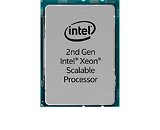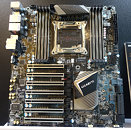Supermicro Expands GPU Solutions Portfolio with Deskside Liquid-Cooled AI Development Platform, Powered by NVIDIA
Supermicro, Inc., a Total IT Solution Provider for Cloud, AI/ML, Storage, and 5G/Edge, is announcing the first in a line of powerful yet quiet and power-efficient NVIDIA-accelerated AI Development platforms which gives information professionals and developers the most powerful technology available today at their deskside. The new AI development platform, the SYS-751GE-TNRT-NV1, is an application-optimized system that excels when developing and running AI-based software. This innovative system gives developers and users a complete HPC and AI resource for department workloads. In addition, this powerful system can support a small team of users running training, inference, and analytics workloads simultaneously.
The self-contained liquid-cooling feature addresses the thermal design power needs of the four NVIDIA A100 Tensor Core GPUs and the two 4th Gen Intel Xeon Scalable CPUs to enable full performance while improving the overall system's efficiency and enabling quiet (approximately 30dB) operation in an office environment. In addition, this system is designed to accommodate high-performing CPUs and GPUs, making it ideal for AI/DL/ML and HPC applications. The system can reside in an office environment or be rack-mounted when installed in a data center environment, simplifying IT management.
The self-contained liquid-cooling feature addresses the thermal design power needs of the four NVIDIA A100 Tensor Core GPUs and the two 4th Gen Intel Xeon Scalable CPUs to enable full performance while improving the overall system's efficiency and enabling quiet (approximately 30dB) operation in an office environment. In addition, this system is designed to accommodate high-performing CPUs and GPUs, making it ideal for AI/DL/ML and HPC applications. The system can reside in an office environment or be rack-mounted when installed in a data center environment, simplifying IT management.















